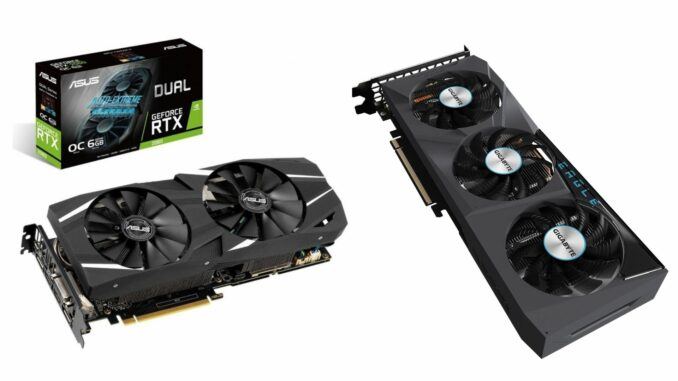
Please note: As an Amazon Associate I earn from qualifying purchases. I also work with other affiliate partners and may be compensated from the links below. Details here.
With the wild prices we’ve seen the last couple of years, PC enthusiasts are wondering if it’s possible to get their hands on a decent graphics card and still have funds left over to spend on less important things like food.
The cards are still not at their MSRP, but you might be surprised to learn that there are still some excellent gaming graphics cards that fall within a reasonable price-performance margin.
And so, we’ve taken a look at the best gaming graphics cards under $400 in 2023 to help you gain the most performance at a reasonable price point.
Best Gaming Graphics Cards Under $400 in 2023 Round-Up
The table below will give you a quick look at our selections for the 8 best gaming graphics cards under $400 currently available on the market. To read a full review, simply click on ‘review>>’ in the respective row.
Product | Image | Rating | |
1. ASUS GeForce RTX 2060 OC ''Best graphics card under $400 overall'' | 9.8 | ||
2. GIGABYTE Radeon RX 6600 Eagle ''Best AMD graphics card under $400'' | 9.7 | ||
3. ZOTAC Gaming GeForce GTX 1660 SUPER ''Best bang for your buck'' | 9.6 | ||
4. GIGABYTE GeForce RTX 3050 Gaming OC ''The only 3000 series GPU under $400'' | 9.6 | ||
5. ASUS TUF Gaming NVIDIA GeForce GTX 1660 Ti EVO OC ''Cheapest GPU with solid 1080p performance'' | 9.5 | ||
6. PowerColor AMD Radeon RX 6500 XT ''Most compact GPU under $400'' | 9.3 | ||
7. MSI GeForce GTX 1650 SUPER AERO ITX OC ''Honorable mention'' | 9.2 | ||
8. MSI Gaming GeForce GTX 1650 ''Honorable mention #2'' | 9.1 |
1. ASUS GeForce RTX 2060 OC
CUDA Cores: 1920 | Base Clock: 1395 MHz | Boost Clock: 1755 MHz Gaming Mode (1785 MHz OC Mode) | Memory: 6 GB GDDR6 | Memory Clock Speed: 14000 MHz | Memory Interface: 192-bit | Max. Monitors Supported: 4 | Dimensions: 242 x 130 x 53 mm

REASONS TO BUY
- Excellent performance for the money
- The best GPU for under $400
- Perfect for 1080p gaming
- Viable for 1440p gaming
- Quality construction
- Great cooling solution
- Ray Tracing
- Factory OC
REASONS TO AVOID
- Quite bulky
- Low aesthetic value
- No RGB
Our Rating: 9.8/10
If you’re looking to keep your GPU budget under $400 while making as few compromises as possible, then this custom RTX 2060 card by ASUS might just be the card of your dreams. Whether you’re wanting to immerse yourself in the marvel of virtual reality, augment your competitive edge with higher refresh rates, or appreciate the artistry of modern AAA titles in high resolution, this card has you covered.
Despite the RTX 2060 being an older generation GPU, it packs the performance to maintain its relevance in 2023. In most cases, we’re even seeing it outshine newer cards that fall within the same price range. As an RTX card, it’s also recent enough to be able to utilize ray-tracing technology in compatible games.
At 1080p, you can expect to be playing the most competitive games with more than 100fps. Older titles like CS: GO will even clock in at well over 200fps. If you’re looking to up your resolution to 1440p and experience some of the best graphics gaming has to offer, this card will keep your gameplay smooth at a comfortable average of 60-70fps.
Only when it comes to the most graphically intense titles will this card start struggling to produce high frame rates. With that being said, even games like Assassin’s Creed Odyssey can still be rendered at more than 30fps.
On top of providing an excellent level of performance for a budget-friendly build, ASUS has also packed this card full of useful features.
Overclocking can be an intimidating prospect for buyers who aren’t familiar with the process. Those who are familiar might also be aware that buying a GPU with the intent to overclock can be a bit of a gamble. Due to imperfections in the process of silicon wafer manufacturing, your success with overclocking can depend on your luck with what’s been dubbed the “silicon lottery”.
ASUS has taken care of all the hassle for you here. This card comes packaged with the guarantee that your GPU will overclock to at least 1785 MHz, as well as the useful GPU Tweak II software that allows you to easily swap between different clock speeds and even safely experiment with some custom overclocking.
If a GPU is going to be overclocked, it’s going to produce significantly more heat. It’s essential to keep an overclocked card cool, otherwise, you risk shortening its life span, overheating your PC, or even causing immediate damage to your brand-new card.
ASUS’s dual fan configuration and robust heat piping keep your thermals low even while you’re squeezing every bit of performance out of it you can. Even better, the fans are programmed to remain idle under 55°C and even manage to be quieter than most cards when they are spinning.
To top it all off, it has a quality aluminum plate backing to make sure nothing bends. In terms of connecting your monitor(s), the card has 2 HDMI ports, 1 DisplayPort, and 1 DVI-D port.
With everything this card offers, it’s hard to find much in the way of faults. However, there are a couple of reasons why some buyers might look elsewhere for their perfect budget-friendly GPU. First off, the card is quite large.
If you aren’t working it into an ATX build with at least a mid-tower case, you might run into trouble cramming it in with your other components. It also wasn’t designed with aesthetics in mind. Unless you enjoy a simple utilitarian style and aren’t too interested in RGB elements, you probably won’t find much display value in this card.
Despite some shortcomings, the ASUS GeForce RTX 2060 OC is an excellent choice for budget-oriented builds in 2023. It’s perfect for 1080p gaming and even puts 1440p gaming on the table. if you’re set on staying under $400 but want to get as much power as you can, then the ASUS GeForce RTX 2060 OC is where you’ll want to put your money.
2. GIGABYTE Radeon RX 6600 Eagle
Stream Processors: 1792 | Base Clock: 1626 MHz | Boost Clock: 2044 MHz Gaming Mode (2491 MHz OC Mode) | Memory: 8 GB GDDR6 | Memory Clock Speed: 14000 MHz | Memory Interface: 128-bit | Max. Monitors Supported: 4 | Dimensions: 282 x 41 x 113 mm
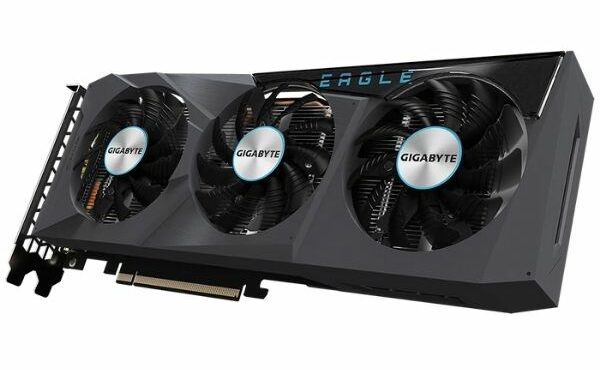
REASONS TO BUY
- Best AMD card under $400
- Excellent performance for the money
- More VRAM than its Nvidia counterpart
- Perfect for 1080p gaming
- Viable for 1440p gaming
- Quality construction
- Excellent cooling solution
- Plenty of connectivity
REASONS TO AVOID
- Low aesthetic value
- No DVI port
- No RGB
Our Rating: 9.7/10
Representatives of team red will be happy to see an AMD card making second on our list. In terms of average performance, it’s hot on the heels of our first choice. The difference will be imperceptible in many cases, only ever losing out by a couple of frames.
Fortunately for GIGABYTE’s Radeon RX 6600 Eagle, average performance benchmarks aren’t the only factor worth considering when buying a new GPU. The RX 6600 offers a few features that make it a viable choice over the RTX 2060.
The first thing to note is that the RX 6600 boasts a bit more VRAM than the RTX 2060. The RTX 2060 only has 6GB of VRAM while the RX 6600 comes equipped with 8GB. When it comes to gaming at 1080p, this isn’t usually going to make any difference. However, at 1440p, the difference can make or break your gaming experience.
The speed at which a GPU can render graphics starts to matter a lot less when the card it’s on doesn’t have enough VRAM to load all of the necessary assets at once. When it comes to rendering scenes that include a multitude of vibrant high-resolution textures, the RX 6600 has a better chance of staying smooth and reducing stutter.
In terms of dimensions, it’s just a bit longer than the RTX 2060, but that isn’t where you’ll run into issues with most builds. It is however significantly shorter and thinner, so if you’ve got a smaller case or are working with a Micro ATX motherboard you’re less likely to run into issues fitting it in.
Due to its longer and thinner face dimensions, the card comes equipped with 3 smaller fans. These fans are more than enough to keep the card nice and cool while it’s being put to work under high load. Unless you’re getting into some extreme overclocking, thermals shouldn’t ever be a concern.
It also includes an aluminum plate backing to reinforce the PCB’s integrity. Instead of having a DVI-D port to connect the card to older monitors, GIGABYTE opted for future-proofing with two DisplayPorts along with two HDMI ports.
Like the RTX 2060, performance is the main priority in this card’s design philosophy. It’s far from the flashiest card you can have on display. With a humble gray plastic covering and no RGB elements, its looks aren’t something to be writing home about.
In an age passed, AMD graphics cards might have been regarded as the lower-end alternative to NVIDIA’s more expensive premium hardware. Today, however, that simply isn’t the case. AMD clearly wasn’t content with its underdog status, and now we’re seeing its potential to stay competitive at just about every price point. And the RX 6600 Eagle is a perfect example of that.
- YOU MAY ALSO LIKE: Best Low Power Graphics Cards
3. ZOTAC Gaming GeForce GTX 1660 SUPER Twin Fan
CUDA Cores: 1408 | Base Clock: 1530 MHz | Boost Clock: 1785 MHz | Memory: 6 GB GDDR6 | Memory Clock Speed: 14000 MHz | Memory Interface: 192-bit | Max. Monitors Supported: 4 | Dimensions: 173 x 111 x 35 mm
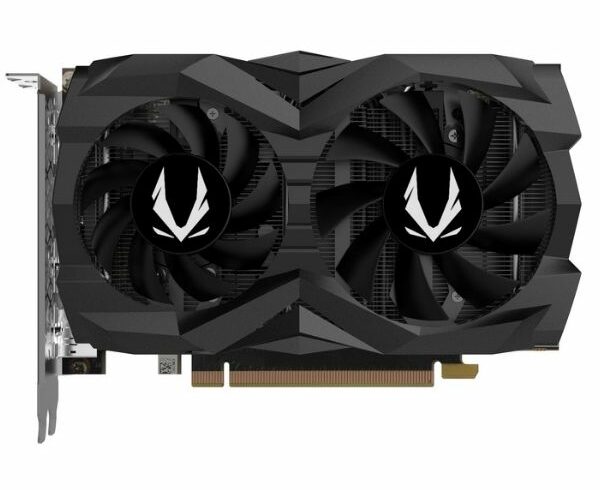
REASONS TO BUY
- Fantastic price-to-performance ratio
- Modern memory configuration
- Superb 1080p performance
- Quality construction
- Efficient cooling
- Very compact
REASONS TO AVOID
- No ray tracing
- Less than ideal at 1440p
- Only 1 HDMI port
Our Rating: 9.6/10
Coming up next on our list is ZOTAC’s GTX 1660 SUPER custom card. If ray tracing and 1440p resolutions aren’t essential to you, it might be worth it to hang on to that extra little bit of cash.
NVIDIA’s 1600 series release was a bit of a unique one. In late 2018 NVIDIA introduced their RTX technology with the 2000 series of GPUs. Not long after, in early 2019, they followed up with the 1660 and 1650 models.
With the 2000 series gearing towards 1440p rendering and emphasizing the potential of ray tracing, the 1600s were fashioned to appeal to buyers who were interested in a brand-new card but satisfied with the quality of gaming at 1080p. Later on, towards the end of 2019, they added the 1660 SUPER to the lineup.
So what is the difference between the 1660 and the 1660 SUPER? What is it that makes the card so “super” in comparison? NVIDIA has an arsenal of naming conventions at its disposal which can sometimes confuse the process of understanding which of its cards might be the best for your use case. When it comes to the 1660 and its SUPER counterpart, the difference is quite simple.
The GTX 1660 SUPER is actually identical to the regular 1660 in every aspect except for memory speed. Doubling the memory speed of the 1660, the SUPER solves some of the bottlenecking issues that had become apparent with the original model’s slower memory. Given that the 1660 SUPER’s price only suffers a small markup from the 1660, it would be difficult to ever justify purchasing the normal 1660 instead of the SUPER version.
Because ray tracing is a relatively new technology, there are many cases where its absence won’t even make a difference. As of 2023, there is around 120 video games available that support ray tracing. There are certainly a lot more to come, but it’s probably a good decision to see if your favorite games are RTX-compatible before making your mind up about its value.
In terms of aesthetics, it might have a bit more display value with its sleek black stealth-like design, but with its lack of RGB elements, it won’t be showing off your flair for color. Its rear IO comes equipped with 3 DisplayPorts and only 1 HDMI port. If you’re wanting to connect more than one monitor with HDMI, you’ll want to make sure you also have an adapter cable handy.
ZOTAC has bundled the components of this excellent price-performance-oriented card into a very compact package. Dual fans adopting state-of-the-art airflow design principles will also keep this card’s thermals relatively low under normal conditions.
Even under high load, this setup isn’t going to be particularly noisy. It will fit snugly into most modern PC builds, even being suitable for Mini ITX cases and motherboards.
Overall, the ZOTAC GTX 1660 SUPER is an excellent graphics card for compact builds designed for 1080p gaming. Yes, the price is a bit higher compared to what it was before the chip shortage. But, as it stands today, this GPU offers the best price-to-performance ratio out of the 1600-series lineup while staying below the $400 mark.
- ALSO READ: Best Graphics Cards for 3D Rendering
4. GIGABYTE GeForce RTX 3050 Gaming OC
CUDA Cores: 2560 | Base Clock: 1550 MHz | Boost Clock: 1822 MHz OC Mode | Memory: 8 GB GDDR6 | Memory Clock Speed: 14000 MHz | Memory Interface: 128-bit | Max. Monitors Supported: 4 | Dimensions: 282 x 117 x 41 mm
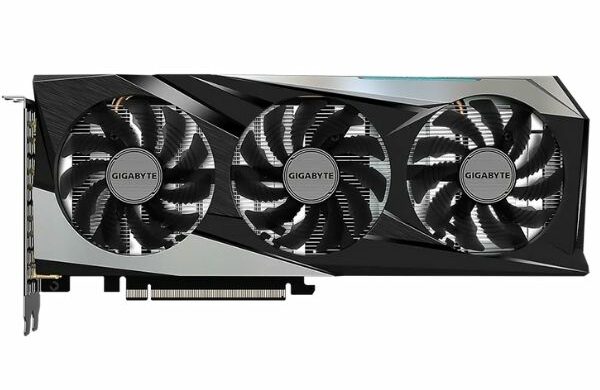
REASONS TO BUY
- 3000 Ampere architecture
- The only 30-series card available under $400
- Great 1080p performance
- Attractive aesthetics
- Power-efficient
- Great cooling solution
- Ray tracing
- 8GB VRAM
- Factory OC
REASONS TO AVOID
- Excessive markup
- Less than ideal at 1440p
Our Rating: 9.6/10
Are you surprised to see one of NVIDIA’s 3000 series GPUs so far from the top of the list? (We are just as surprised to be putting it here!) The GPU market is currently a bit, well, wacky, to say the least. In another reality, this card might be receiving a glowing recommendation. Unfortunately, a handful of present factors and circumstances create a few reservations.
We’ll be most directly comparing the RTX 3050 to the RTX 2060 since these are the only cards on our list that offer ray tracing.
Ray tracing capabilities are where this card really shines. With significantly more CUDA cores, reflections, shadows, and texture shading is going to render more realistically with the 3050. On top of having more CUDA cores, these 2nd generation cores are better optimized.
In addition to the 3050’s ray tracing effectiveness, NVIDIA’s Ampere architecture has made a substantial leap forward in power efficiency. While its max thermals and max power consumption remain comparable to previous architectures, Ampere distributes power much more efficiently at low to medium GPU load.
Furthermore, this card includes 8GB of GDDR6 VRAM. It can load textures and assets very quickly and can keep a lot of them primed and ready to render all at once. The chip itself isn’t quite built to handle any resolution higher than 1080p, but this can still come in handy with games that want to put a lot of different entities on your screen at the same time.
Unfortunately for gamers, the 3050’s highlights demonstrate the double-edged sword that is a good chip design. These features have made the RTX 3000 series a prime target for scalpers and crypto miners. At MSRP, this card is a much more reasonable purchase.
Regrettably, you’ll be hard-pressed to find a 3050 being sold for less than $300, that is, if you can even find it in stock somewhere to begin with. If you do end up getting lucky, it’ll be an exceptional card for your money. For now, as it’s struggling to stay below $400, it might be a better bet to stick with an older card.
When it comes to average performance, the three graphics cards that we’ve placed higher on this list tend to be more reliable. It’s settling in just a bit below what we’d typically recommend for a smooth 1440p experience but does hold up great when it comes to 1080p. Competitive games will have you comfortably sitting around 100fps, and more demanding games shouldn’t be dropping very far below 60fps very often if they even do at all.
In addition, GIGABYTE’s cover includes 3 of their highly reliable WINDFORCE fans to keep thermals in check. Two DisplayPorts and two HDMI ports allow for 4 simultaneous monitor connections. To top everything off, an aluminum backplate preserves this very long card’s structural integrity.
If you’re the type of person who often finds themself at the right place at the right time (or at least the right GPU retail website), if you’re willing to spend a bit of extra cash on the comfort of owning one of the most recent chip models, or maybe if you just don’t mind waiting a little while for the GPU market to (hopefully) normalize a bit, then the RTX 3050 is a perfectly satisfactory card for your 1080p gaming needs.
One thing to be careful of if you’re doing your own research is a change to what you might be used to with NVIDIA’s naming conventions. In the past, NVIDIA has differentiated its compact laptop iterations by adding the letter ‘m’ to the end of the product’s title.
With 3000 series cards, you’ll instead see ‘Laptop GPU’ tacked onto the end. This seems like it might help with clarity, but when it comes to search engines, review sites, benchmarks, and other useful research tools will sometimes turn up the laptop version’s results instead of the standalone graphics card. It’s also worth noting that right now, a 3050 Ti model exists for laptops while there is no such card for desktops.
With all that being said, the GIGABYTE GeForce RTX 3050 Gaming OC is still a viable graphics card that offers great 1080p performance and better-optimized power delivery compared to previous generations. We highly recommend you buy this card if you can find it around the $320 mark.
- RELATED READING: Best White Gaming Graphics Cards
5. ASUS TUF Gaming NVIDIA GeForce GTX 1660 Ti EVO OC
CUDA Cores: 1536 | Base Clock: 1500 MHz | Boost Clock: 1770 Mhz | Memory: 6 GB GDDR6 | Memory Clock Speed: 12000 MHz | Memory Interface: 192-bit | Max. Monitors Supported: 4 | Dimensions: 206 x 124 x 46 mm
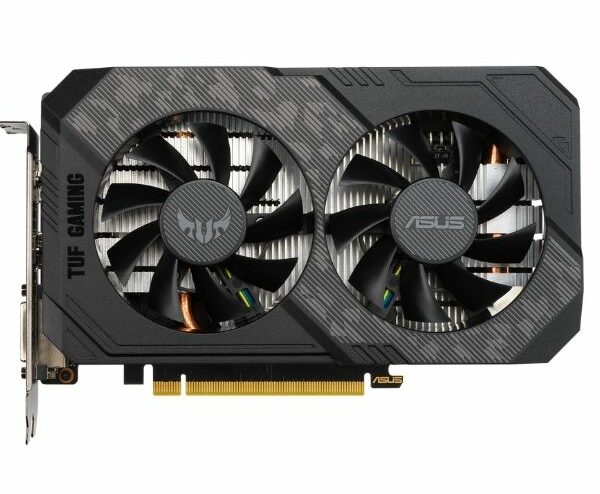
REASONS TO BUY
- Excellent performance at 1080p
- High core clock speeds
- Factory OC
- 6GB of fast VRAM
- Compact design
- Quality construction
REASONS TO AVOID
- Not suitable for 1440p
- Excessive markup
- Similar average value to ‘SUPER’ counterpart
Our Rating: 9.5/10
Another premium 1080p card to keep your eye out for is ASUS’s TUF brand of the GTX 1660 Ti. This card has a very similar average performance benchmark when compared to its peer, the 1660 SUPER.
When the 1660 SUPER was first released, the relatively massive price difference between the two, despite their similar specs, made the 1660 SUPER a no-brainer. As price points have fluctuated, these two GPUs now find themselves neck and neck. We’d like to say that the price of the 1660 Ti dropped to match its competitor, but unfortunately, the opposite is true.
If you’re gunning for one version of the 1660 or the other, it wouldn’t be a bad call to leave the decision to whichever card you can find a better deal for on any given day of the month or even week. When we look at their benchmarks, the two cards trade blows back and forth depending on what particular metric is in question.
We’ll summarize the major differences here to help you make sure you’re making an informed decision.
To start, the 1660 Ti has a higher core clock speed than the 1660 SUPER. This means that the actual process itself is just a little bit faster. However, the specifications of the 1660 SUPER include faster memory speed. One card isn’t simply straight-up better than the other.
Generally speaking, the faster core clock speed of the 1660 Ti is going to lend itself well to rendering in 1080p. When you up the resolution to 1440p, the 1660 Ti starts to experience memory bottlenecks, and the 1660 SUPER will start to pull ahead.
As long as you’re sticking to 1080p, the 1660 Ti is, generally speaking, going to outperform the 1660 SUPER by a small margin. We do see a handful of cases where this isn’t true, with Fortnite being the most popular example. The 1660 Ti also, generally speaking, tends to command a higher price tag.
ASUS has taken the reins with overclocking this card, guaranteeing a potential core clock speed of at least 1845 MHz. They’ve also included the GPU Tweak II software to steer you along with a safe and simple custom overclocking experience.
At factory settings, ASUS’s cooling setup is built to keep heat levels low. You shouldn’t run into any thermal problems until you start pushing the limits of its overclocking potential.
In terms of connectivity, the card includes a single DVI-D port in case you’re interested in getting some more use out of an older 1080p monitor. Along with that, it also has 2 HDMI ports and one DisplayPort connector.
In most cases, the potential longevity of the newer 1660 SUPER and predominantly lower cost is going to make it the better option. Nevertheless, if you’re set on sticking to 1080p and find its price to be suitable, the 1660 Ti is still a worthy contender.
- YOU MAY ALSO LIKE: Best RGB Motherboards
6. PowerColor AMD Radeon RX 6500 XT
Streaming Processors: 1024 | Base Clock: 2310 MHz | Boost Clock: 2610 MHz Gaming Mode (2815 MHz OC Mode) | Memory: 4 GB GDDR6 | Memory Clock Speed: 18000 MHz | Memory Interface: 64-bit | Max. Monitors Supported: 2 | Dimensions: 165 x 125 x 40 mm
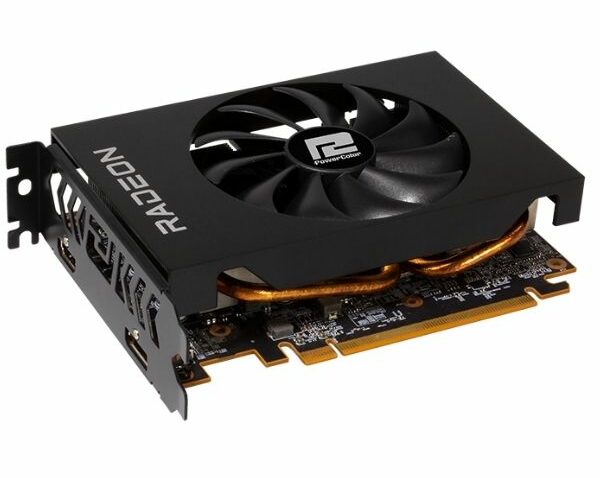
REASONS TO BUY
- Best price-performance on this list
- Way below the $400 mark
- Least expensive 1080p GPU
- Beautifully compact
- Power-efficient
- Runs cool
REASONS TO AVOID
- Only 2 display connectors
- Not suitable for 1440p
- Less ideal at 1080p
Our Rating: 9.3/10
Given the current state of the GPU market, we wouldn’t blame you for feeling a bit overwhelmed by the plethora of factors to consider. Let’s take a breather from all of the convoluted naming conventions and nonsensical price variations.
Boiling everything down to one straightforward objective, squeezing as much value as possible from every dollar spent, PowerColor’s AMD Radeon RX 6500 XT swoops in to save the day.
In defiance of its status as the cheapest card on our list, this RX 6500 XT crams a substantial amount of processing power into an affordable component. When it comes to raw price-performance margins, the competition doesn’t even come close. In fact, even when we expand beyond the scope of this list, the RX 6500 XT is still the undisputed champion.
PowerColor has taken this distinction and rolled with it. Instead of taking on an array of bells and whistles, they’ve refrained from burdening your budget with anything that isn’t absolutely necessary. This RX 6500 XT’s rectangular matte black cover is simply defined. It features a single fan mounted to a standard heat sink.
Tech-wise, there isn’t anything especially notable here. Considering the 6500 XT’s modest thermals, there doesn’t need to be.
Since it’s designed for the mini-ITX form factor, this card is quite compact. It’ll fit cozily into any tiny PC build and have plenty of room to spare in any adhering to ATX standards. It only has two display connectors, one for HDMI and one for DisplayPort. You likely won’t end up wanting more though, unless you’re using multiple monitors at 720p or lower resolution. At these benchmarking levels, it isn’t ideal for a setup with more than 1 monitor.
In terms of absolute performance, this card isn’t going to get you anywhere adequate at 1440p. At 1080p, it won’t struggle to consistently stay above 30fps when rendering more recent titles. Classic competitive titles like CS: GO, on the other hand, will be even better off at this resolution, able to easily keep up with the 144fps standard.
There are plenty of reasons why you might consider opting to buy this card instead of some of the others that might still fit your budget. Purchasing this card will ensure that you’re milking every penny you spend to its limit while also leaving you with plenty of cash to spare.
It’s also a highly suitable addition to any smaller PC build. As a final point, if you’re finding yourself hesitating to invest in an overpriced premium card and are still holding out hope for prices to stabilize in the near future, this card might be just the thing to tide you over until circumstances improve.
- READ ALSO: Best CPU Under $300
7. MSI GeForce GTX 1650 SUPER AERO ITX OC
CUDA Cores: 1280 | Base Clock: 1530 MHz | Boost Clock: 1725 MHz OC Mode | Memory: 4 GB GDDR6 | Memory Clock Speed: 12000 MHz | Memory Interface: 128-bit | Max. Monitors Supported: 3 | Dimensions: 172 x 115 x 42 mm
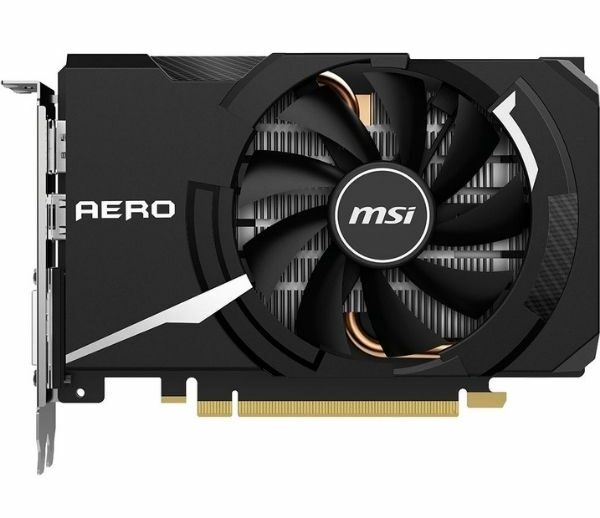
REASONS TO BUY
- Factory OC
- Decent at 1080p
- Wider memory bus
- Quality construction
- Very compact
REASONS TO AVOID
- Low price-performance ranking
- Not suitable for 1440p
- Excessive markup
- Limited compatibility with varying monitor setups
- High thermals
Our Rating: 9.2/10
Our final two choices are 1650 series NVIDIA GPUs released with the intent to be more affordable alternatives to their 1660 counterparts. With little to no viability for 1440p, these cards give buyers the option to save a bit of money by sacrificing the potential to bump their resolutions up above 1080p.
MSI’s GeForce GTX 1650 SUPER AERO ITX OC is going to be the mightiest choice of that bunch. It performs just a bit better than the RX 6500 XT on average, but a significantly higher price earns it a lower spot on our list of recommendations.
Comparing its array of specifications to the 6500 XT, it’s initially a little unclear why this card might be performing better. Its memory and processor clock speeds are both slower. Aside from that, every other spec looks to be about the same. There is just one sneaky little element that grants this card advantage in some circumstances. Its memory bus is twice as wide as the 6500 XT’s.
The way this affects a card’s ability to handle graphics calculations can be easily compared to the idea of vehicles on a highway. Even if one highway has a higher speed limit, allowing cars to travel faster, if it only has half as many lanes as another highway, it might be more likely to get congested and cause traffic to slow down. In this way, the 1650 SUPER’s much wider memory bus allows it to leverage its other specs much more efficiently.
Once again, these kinds of very discrete differences mean that the effective performance of each card is highly dependent on the specific game being played. In this case, wider memory buses lend their strength to games with more complex lighting and reflection effects. The difference can be pretty huge, so if your decision is coming down to the 1650 SUPER or the 6500 XT, your best bet is to look up benchmarks for how your favorite games measure up with each card.
MSI has also overclocked this card for you, guaranteeing a boost clock of at least 1740 MHz. This card is also compatible with MSI’s streamlined overclocking software, MSI Afterburner. While this does mean you can venture into overclocking this card even further, doing so can incur a bit of a risk with this particular card.
For the amount of processing power it has and the amount of heat that processing generates, one fan might not be enough to push this GPU to its absolute limits. Even restrained to its factory overclock settings, it runs a bit hotter than comparable graphics cards. If you’re adding it to a smaller build that lacks good airflow, overclocking it any further puts you at risk of overheating.
MSI includes a port for DVI-D on top of having one for DisplayPort and one for HDMI. You’ll be able to hook it up to just about any monitor. Like with the 6500 XT, it wouldn’t be recommendable to use this card with more than one monitor. The number and variety of available ports should be enough for the vast majority of users.
- RELATED READING: Best White Motherboards
8. MSI Gaming GeForce GTX 1650 Ventus XS
CUDA Cores: 896 | Base Clock: 1485 MHz | Boost Clock: 1860 MHz OC Mode | Memory: 4 GB GDDR6 | Memory Clock Speed: 8000 MHz | Memory Interface: 128-bit | Max. Monitors Supported: 3 | Dimensions: 245 x 127 x 39 mm
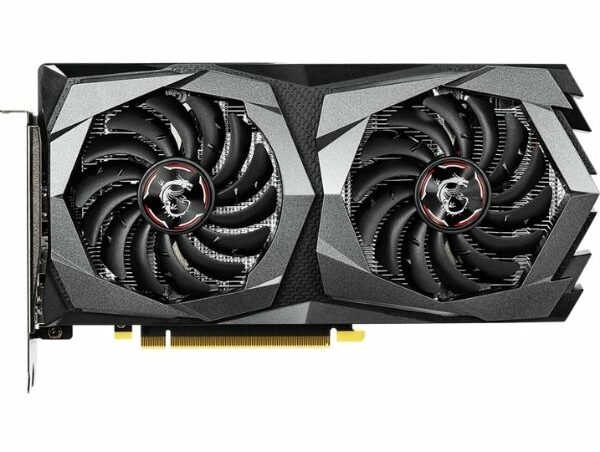
REASONS TO BUY
- Least expensive NVIDIA card
- Good 1080p performance
- DVI connection
- Smaller size
- Decent aesthetic value
- Low thermals
REASONS TO AVOID
- Outrageous markup
- Not viable for 1440p
- Might be too large for some Mini ITX cases
Our Rating: 9.1/10
Concluding our list of the best GPUs under $400 is MSI’s standard edition of the GTX 1650. This card is more of a “we recommend keeping an eye on this card” than a “we recommend buying this card right now”. It might be one of the cheapest cards on our list, but it’s also one of the least powerful.
At its original price, it featured a palatable enough price-performance ratio. However, the cost is currently hovering around double what it started out at. This is a rather extreme markup.
The market is currently quite bad for buyers, but we’re typically only seeing markups of around 50%. It’s well within reason to suspect that the 1650’s current price tag won’t be able to endure market forces for much longer and will eventually settle back down to something tolerable.
If you’ve got the patience to set your sights on the horizon and hold out for that hopeful future, then a modest but reliable entry-level graphics card might be waiting for you on the other side. It sits at the bare minimum of 1080p gaming but absolutely refuses to drop below 30 fps outside of extreme circumstances in the latest AAA titles.
It’s just barely too large to be a guaranteed fit in a Mini ITX build, but if the case has a bit of extra room to spare, it might still be a compatible fit. Like the 1650 SUPER from MSI, their standard 1650 edition comes factory overclocked and set to be compatible with MSI Afterburner for more custom overclocking.
This version’s dual fan setup and somewhat more effective heat sink will tend to make your attempts at doing so a little more fruitful.
Connectivity-wise, it offers a variety of ports, including a single DisplayPort, HDMI, and DVI-D port to suit the variety of screens different users might have on hand. As a bit of a bonus, its case has a bit of a more interesting design than some of the others on our list. Octangular silver elements accentuate the card’s sleek black fan blades. There was clearly a bit more attention given to this model’s visual design.
Aside from that, if you’re not a diehard NVIDIA enthusiast or don’t just harbor a deep level of appreciation for NVIDIA’s generally more user-friendly and better-implemented software and feature inclusions, there aren’t many compelling reasons to pull the trigger on purchasing a GTX 1650 instead of one of the other contenders on our list.
For now, if the performance of this card is hitting all of your sweet spots, it’s in your best interest to wait for better days. Despite being a solid enough GPU, our other suggestions are looking a lot more appealing by comparison.
In Conclusion
Buying a GPU in 2023 isn’t nearly as straightforward as it once was. New technologies, evolving marketing strategies, and extraordinary global events have made the process quite discouraging. As if the outrageous prices weren’t bad enough, buyers will also have to decipher cryptic buzzwords and naming conventions.
These have been our picks for the best gaming graphics cards under $400. We hope that by sharing our thoughts, we’ve helped you to feel better about (or at the very least better informed about) the potentially daunting investment in a GPU that can suit both your gaming and budgetary needs.









Be the first to comment